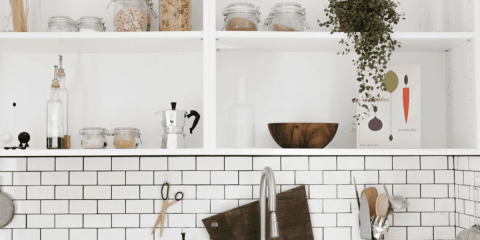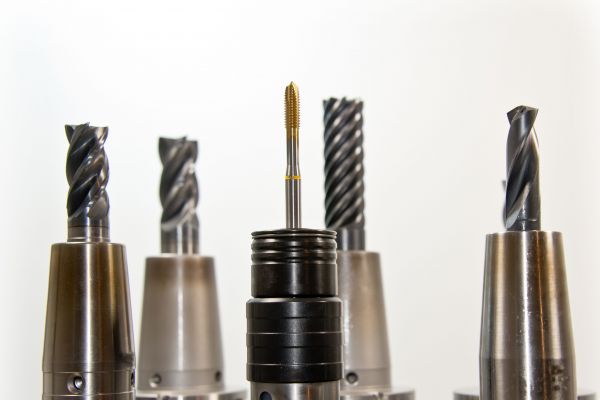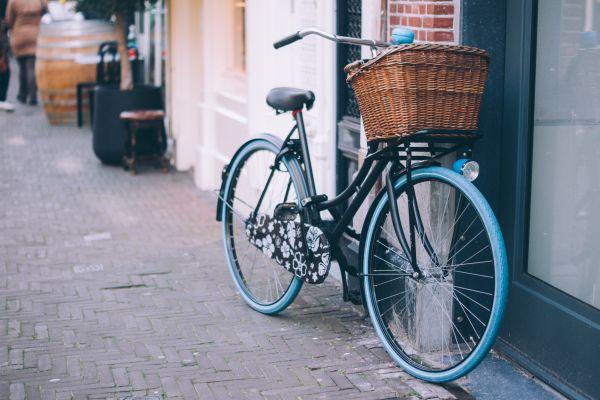There’s no better time to organize your space than when you’re just moving into it. The kitchen is one of the most important rooms in which to create a good workflow, and settling in to a new space is the perfect opportunity to set up your stuff exactly the way you want it. After all, timing is important when it comes to cooking.
How you organize your stuff will largely be based on your personal cooking style, but setting up a system that works for you can still be intimidating, especially if space in your new kitchen is limited or if you’re downsizing to a smaller home.
To help you perfectly organize your kitchen, we’ve teamed up with Cheryl Lemily from Uncluttered Simplicity, Flavia Andrews from Neat House, Sweet Home, and Marie Leslie from Let Your Life So Shine to discuss what you’ll need to consider, how to get started, and how to figure out what system is right for you so you can stay organized and efficient from meal planning to plating. So whether you’re just starting your move, are in the midst of unpacking, or are simply updating your current system, try these tips for organizing your kitchen:
Empty & Declutter
Decluttering is especially important if you’re downsizing or moving to a space with a smaller kitchen. Cheryl agrees:
“The best way to organize a small kitchen is to declutter it first. Between cooking/entertaining, people tend to spend a lot of time in their kitchens, which is why (especially in a small kitchen) we should only keep the items we use and love and kick the clutter to the curb. Start by grouping items according to type and sort through each category one at a time. Keep only the items you use, need, and love. Discard the rest. Once you've decluttered, your kitchen will be much easier to organize!"
To properly organize your new kitchen, you’ll need to empty out each cabinet, cupboard, and drawer. Rather than boxing everything up immediately, lay it all out—you need to be able to see what you have in order to figure out what to do with it. It’s time to get honest with yourself and toss out anything you don’t want, need, or use anymore. Donate anything that is still usable or edible, and throw out items that are broken, damaged, or expired.
Need some help kick-starting the process? Flavia recommends starting with your pantry:
“Starting with your pantry is the easiest way to jump-start kitchen organization since food expiration dates are the cue for making a decision to either toss or save. I joke and say: 'I wish my clothes had an expiration date, so I could declutter my closet as easy as I declutter the pantry'. Once you start, you gain momentum, you feel inspired and driven to continue decluttering, cleaning, and organizing. Along the same lines, it's easy to clean and declutter your drawers following the rule of discarding duplicates.”
Don’t get discouraged if it takes you a few days or weeks to iron out a system that works best for you. Marie says:
"Your organization can change as your needs change. It’s ok to move things around to make them work better for you."
Cheryl says that decluttering and organizing your kitchen doesn’t have to be an endless core:
“If you can devote a weekend to decluttering, organizing, and deep cleaning your entire kitchen, you shouldn't need to worry about doing it again for at least another 6 months or so. Or, until you need to move again!”
Sort, Group, and Categorize Similar Items
Now that your cabinets and drawers are empty, it’s time to sort your stuff. Before you sort, Flavia recommends getting rid of unnecessary tools:
“Avoid duplicated kitchen tools and gadgets. You don't need 2 bottle openers or 3 ice cream scoopers.”
There are a few ways to categorize items, so you’ll just have to find which ones appeal to you most. Try these categories:
| Food | Cooking & Baking | Dishes | Cleaning Supplies |
|---|---|---|---|
|
|
|
|
Moving and unpacking is a great opportunity to streamline your kitchen. Cheryl says:
“When moving into a new home (particularly one with a small kitchen), I like to unpack items as I need them. Doing this helps me identify what I need to keep in my new kitchen verses items I can do without.”
Organize
For Flavia, “an organized kitchen - big or small - starts with clutter-free counters. A clear counter not only makes the space look open and tidy, but also helps make meal prep quick and enjoyable.”
If you need help getting started, Marie suggests starting small:
“Choose one cabinet, drawer or work area to organize at a time. Unless your kitchen is very small, don’t try to organize the whole thing at one time. Seeing success in one small area will motivate you to do more while trying to do it all at once can be overwhelming.
Another popular method for organizing a kitchen is the French culinary concept of “mise en place”, which means “to have everything in its place”. This concept is usually applied to professional kitchens that use it for ingredients and equipment to ensure speedy service, but it can also be used with cooking utensils and kitchenware in your own home, even if you aren’t as dedicated to cooking as a renowned chef.
Here’s how you can employ the concept of mise en place in your new kitchen:
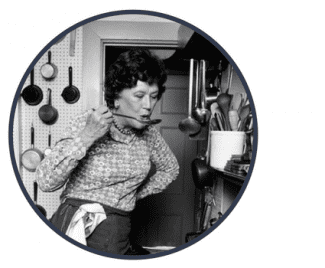
Create Zones
With your items already categorized, it’s time to organize them. This can be especially important in smaller kitchens, which can quickly become cluttered. Flavia recommends organizing zones according to how you use them, rather than by the type of items you use:
“Create a zone for meal prep, with a small tray holding pantry essentials such as oils, salt, and pepper. Designate a cabinet for baking supplies, place glasses in a cabinet near the refrigerator, group mugs, coffee and tea essentials together (a.k.a create a coffee corner/station), etc.”
Photo Credit: Lynn Gilbert via Wikimedia Commons.
Think about the size of your kitchen and how you use it, and create dedicated zones that complement how you work with the space available. You’ll likely need the following areas:
- Food storage
- Tableware
- Cleaning
- Prep
- Cooking
- Baking
Marie stores her kitchen supplies near where she uses them most:
"I keep my pots and pans in cabinets near the stove, and pot holders and cooking utensils in the drawers nearest the stove. That way, when I’m cooking, everything is convenient and close at hand."
Food Storage: Refrigerator and Pantry
You will want to create additional zones within your food storage areas to make things more convenient for you and to keep your food fresh longer.
- Consider keeping these areas organized by expiration date, like at a grocery store, with the food that will last the longest at the back.
- In the fridge, dairy should be kept on the top shelf and meat kept on the bottom, or in the freezer.
- Keep canned goods, dry foods, and spices in a cool, dry place.
- If you have some go-to meals or a regular menu, you might want to consider storing those ingredients together.
Make food storage more convenient and keep your food fresh longer with our infographic:
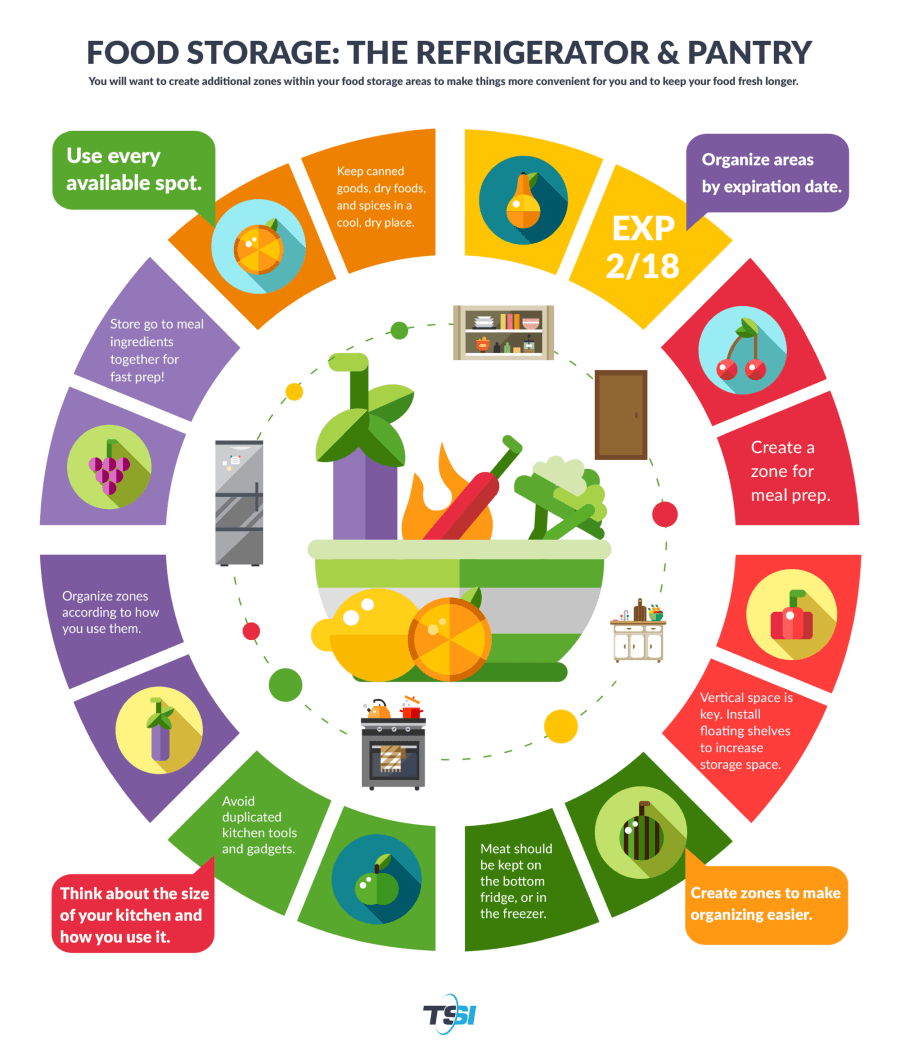
Maximize Space
Using every available spot in an organized way can make a huge difference if you’re downsizing or making a small move. There are lots of tools, including everyday items, that can help you make use of unused areas in your kitchen. Try these out to maximize your space:
- Lazy susans and rotating trays make it easier to reach items at the back of a cupboard. To make use of vertical space, select a multi-tiered option.
- Stackable, see-through containers can help you easily see everything so you don’t have to unpack every box or container to find what you’re looking for.
- Clearly label items, especially ones that look similar (like spices), so you can easily tell them apart
- Tension rods can be used in a variety of ways around your kitchen. Use them to hang paper towels and cleaning bottles under the sink, as a shelf for small containers, or to divide and organize things like cutting boards and cookware.
- Drawer dividers help keep your silverware and other utensils organized so you don’t have to dig through a disorganized drawer to find what you’re looking for.
- A magnetic sorter box easily attaches to your fridge and is perfect for storing coupons, receipts, takeout menus, and grocery lists.
- If you have a small kitchen, an over-the-sink cutting board can help you increase counter space while you’re doing dinner prep.
- A layered, rolling shelf system is a great way to use cupboard space vertically. It also makes it easy to see and grab the items you are looking for.
- Adhesive hooks, magazine racks, and a cork board or magnetic sheet stuck on the inside of your cabinet door is a simple way to use more space. This empty space is the perfect place to keep measuring spoons and cups, cutting boards, and notes. Hooks can also be installed underneath cabinets and used to hang mugs.
Cheryl has these tips to add:
“It's important to use all available storage and workspaces to their full potential. For example, hang things on the insides of cabinet doors, create extra counter space by using cutting boards over stove tops (when not in use, of course) as well as over the top of the sink. Also, if your small kitchen lacks a dedicated pantry, create one using a free-standing bookcase, shelving system, or even a repurposed armoire.
Using vertical space is key when you have a small kitchen. You can install floating shelves all the way up to the ceiling in order to drastically increase the storage in your kitchen. Hanging pots and pans from the ceiling is also a great way to free up cabinet space.”
Store Items Conveniently
The ultimate goal of organizing your kitchen is to make working in there more convenient for you. Cheryl suggests storing items near where you tend to use them:
“Keep drinking glasses in a cabinet next to the fridge, pots and pans near the stove, and plates beside the food prep area.”
Keep these other suggestions in mind when you’re deciding where items should go:
- Consider where the electrical sockets are located in your kitchen and place items that will require plug-access first.
- Keep dishes near the dishwasher (or sink) for easy unloading.
- Store pots and pans with their lids near the stove.
- Items used every day should be placed lower for easy access.
- Items that are used sporadically can be placed in harder-to-reach areas, such as above the fridge.
- Heavier items should be stored near the floor.
| PRO TIP: Until you get adjusted to your new setup and more familiar with where to find things, you may want to keep a list of contents inside drawers, cupboards, or closet. |
Bon Appétit
"Planning a declutter a couple of times each year is usually enough to keep your kitchen under control", recommends Marie. Not only can decluttering and organizing your kitchen make your move easier, it can also make cooking, cleaning, and putting away groceries a smoother process, as well as impress your friends.
About the Contributors
Cheryl is a minimalist, wife, and mom to 3 boys & 2 dogs doing her best to live a small, slow, simple life. On her blog, Uncluttered Simplicity, you'll find practical tips and encouragement to help you declutter, get organized, slow down, save money, and create the simple life of your dreams!
Flavia Andrews is the founder and web content creator of the blog Neat House. Sweet Home™. With a B.S in Industrial Engineering, Flavia has a passion for time management, productivity, and organization. She's always on the hunt for practical planning and organization systems that can eliminate waste of time, money, materials, and other resources that don't generate value. Her specialty: helping women thrive in the most important areas of their lives: personal growth, homemaking, and parenting. She enjoys long morning walks, country music, and black coffee. She currently lives in South Florida with her husband and son.
Marie Leslie is a business consultant, organizer, serial home remodeler, and avid road tripper who chronicles all her adventures at Let Your Life So Shine.
